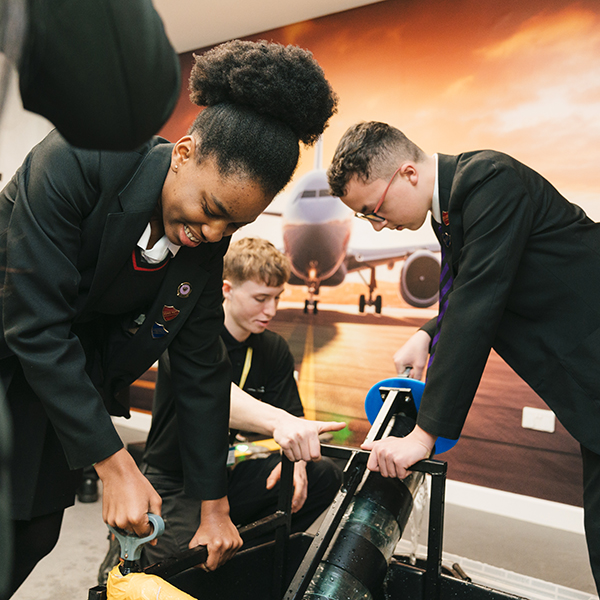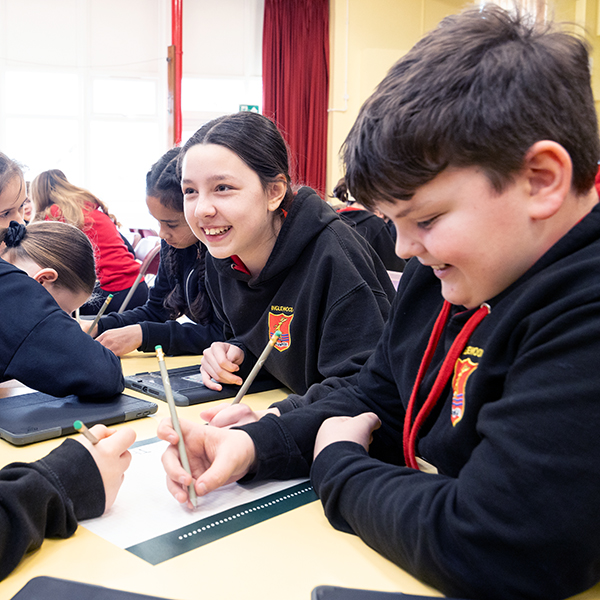The second half of the long autumn term is always a difficult one for teachers: the excitement and novelty of new classes is long gone (for both teachers and pupils); it’s dark when they leave school; the weather contributes to behaviour issues (both the increase in pupils staying indoors during breaktime, and the wind, which as any teacher will tell you, has a strange effect on young people). And that’s in a normal year.
Teachers were already exhausted in September. With new measures in place across much of the UK, they are returning after half term knowing that schools will be one of few places carrying on with business as (new) normal over the coming weeks. But what are they thinking about going into the new half term?
We have been speaking to teachers nearly every day since the pandemic began, often through our own network of 3,500 EVERFI Teachers. To understand how their needs have changed, we carried out surveys in April and August, as well as interviews with teachers across the UK during half-term. Here are five things on teachers’ minds right now
1. Priorities
In a survey we carried out in August, teachers told us that they wanted to see a focus on mental health this year more than anything else (with 71% ranking this in their top five priorities), followed by physical health (49%), communication skills (43%) and PSHE (35%), alongside English (67%) and maths (63%). Teachers also thought that their senior leaders would prioritise curriculum subjects much more than they themselves would, with the opposite being true of pastoral areas and soft skills.
Half a term in, many schools have in fact been implementing a ‘recovery curriculum’, often at the behest of the local authority, with an emphasis on these pastoral considerations and soft skills – both social and metacognitive. Focuses have included “supporting children to reignite friendships with their peers, as children were least likely to have spent time socialising with children of their own age during lockdown; supporting children to successfully separate from their carers with whom they had spent a significant amount of time and supporting pupils to find their stamina again for full-time school,” Claire, a deputy headteacher in a primary school in Kent, told us last week.
At the same time, teachers are identifying where children’s learning is (“It is important to us to generate our starting points with published data at the end of Reception and Key Stage 1, as these will form baselines for further progress measures later on,” Claire said) and addressing the regression in basic skills (“We have really had to pick up handwriting as come children do not have basic pencils and pens at home so we have been really backfilling this gap,” said Aysha, a teacher in a primary school in Plymouth). The most basic classroom protocols have also had to be retaught: “I have generally noted a lack of listening skills, following instructions, and attitudes of some pupils,” said Anita, headteacher of a primary school in Midlothian. Maureen agreed, but extended this to parents: “We have had to spend a lot of time with pupils and parents going over day-to-day operational advice and re-setting basic expectations.” And pupils seem to have lost much of their independence: “For many children who accessed and submitted work frequently and regularly during the remote learning period, they have become very used to having a 1:1 teaching assistant in the form of a family member… they have appeared to have lost much of the independence they had gained and are now struggling with the most simple of tasks, often over-asking for reassurance, for example, ‘Can I turn over my page?’,” said Claire.
And that’s before teachers even get to actual curriculum subjects, where things aren’t looking any better: even though both primary and secondary teachers told us back in April that they thought literacy/English would be amongst the easiest subjects to teach remotely, recent writing assessments show that year 7 pupils have lost 22 months of progress in writing. This is supported by what our teachers are telling us: “written language was seen by staff as one of the areas that had suffered most during lockdown,” said Maureen. As the numbers of pupils self-isolating increases, progress is likely to slow further – all while schools are juggling how to cater for pupils physically in school alongside those at home, with a legal duty recently imposed on schools by the DfE to provide immediate remote education for self-isolating pupils.
So what have children been doing at home, if not always their school work? In April, teachers expressed hope that pupils would at least have the opportunity for enriching experiences within their families, which would support holistic learning and development of life skills, if not the curriculum. Reports of this are mixed: “I have not found the pupil’s knowledge in aspects around family learning and enriching home experiences to have improved as I would have expected and hoped,” said Anita; while Maureen told us that she had reports and indeed evidence of children taking part in “pursuits they wouldn’t normally have engaged in – family walks, picnics, bike rides, gardening, baking, craft work”.
2. Widening attainment gaps
In June, the Education Endowment Foundation warned that school closures may have wiped out nearly a decade of progress in closing the attainment gap between the most and least disadvantaged pupils. Around the same time, the NFER found that the most disadvantaged pupils were accessing far less learning than their more advantaged peers. This has become all too apparent in schools: “there is clear evidence of disadvantaged children’s lack of progress over the months, added by a long summer holiday,” said Anita.
In addition to this, some teachers have reported inconsistency of engagement with learning during lockdown across all demographic groups, making it even more difficult to cater for all childrens’ needs. “We found that some pupils from all demographic groups did nothing, while others did some of the set work, all of the set work or ‘cherry-picked’ what they felt worked for them; some parents decided early on that their child couldn’t/wouldn’t work from home, and others took on the ‘home teacher’ role completely and did all the set work and also followed a curriculum of their own,” said Maureen. So gaps that already existed within a classroom have widened, but with added dimensions, and schools are less able to address these given restrictions on physical space and adult support: “There is a vast gap within different pupils’ current levels. It is challenging grouping pupils in the classroom within the learning areas to embrace group work, as they vary dramatically between areas like reading, number processing etc and pupils may not face one another in class, share resources and share workspaces with any other class,” Anita added.
3. Practical constraints
Restrictions in place to reduce the risk of spreading Covid-19 aren’t just limited to classroom configurations. Many schools are limiting the number of ‘bubbles’ (usually a class or year group) that any adult can work with, so support staff who usually support pupils across a key stage or more are no longer able to do so. “The most significant impact on the quality and breadth of what we have been able to offer is not being able to cross support staff over year group bubbles for their own safety,” said Claire. “We would ordinarily run some support interventions that we have not been able to this year, as they take children from a variety of year groups across the school. The most important one is a ‘lunch club’ that we run for children of all ages who struggle with playing effectively and constructively for the extended playtime at lunch time, working on developing their social skills and ability to play. The impact is being felt at what can be a tricky time of day for lots of children.” Maureen gave other examples: “We haven’t been able to reinstate indoor PE as the hall is currently used as a staffroom to facilitate social distancing and outdoor PE is recommended. We also have pupils eat their lunch in classrooms as the hall cannot be used for this purpose – this restricts the use of Pupil Support Assistants in classes as we have to operate a split break system, so PSAs cover early break and late break, then have their own break; the same structure operates at lunchtime so severely limits PSA time in class.” And children needing external support aren’t able to access it: “Pupils who had appointments for assessments with other agencies such as mental health and speech and language were put on waiting lists and many of these backlog appointments need to still take place,” said Anita.
In addition, cleaning protocols are adding extra pressure to already squeezed school budgets, with schools in England spending an average of over £8,000 each on cleaning supplies, PPE and handwashing stations in the first few weeks of term alone; and nearly half of teachers saying that cleaning arrangements in their school relied on staff who weren’t employed as cleaners. “The pressure on the school budget has been huge, with no compensation for the additional costs of Covid: additional bins, hand sanitiser stations, cleaning equipment and supplies and additional cleaning hours for cleaning at lunchtime to name but a few,” said Claire.
It’s not just cost either – it’s the level of planning and replanning required of teachers and senior leaders. In many secondaries, teachers are now moving between classrooms rather than students, “which is putting extra pressure on everyone,” said Emma*, a teacher in a secondary school in Birmingham. “If you forget something you just have to teach without it, and students are in the classrooms before teachers arrive”. And that’s just one example. “Every single process that we took for granted in school has needed rethinking and making ‘Covid secure’ from arrival at school and movement around the building, to eating lunch and how toilet blocks are allocated, from how interventions can be delivered to how books can be marked and PE safely organised,” said Claire. “And so often when you think through a plan that could be implemented, you are able to successfully get nine-tenths of the way through a thought process before there is a dawning realisation that this new thought or idea will in some way negatively impact practice in another area, or breach the rules for Covid security, and that is where it has caused a level of mental drain that has not been felt this acutely in education before… You cannot help but wistfully compare what we are able or more importantly, not able to offer, this September compared to last year.”
4. Staff wellbeing
Teachers are tired, and in the summer almost half of teachers we surveyed expected their work/life balance to be even worse this year. They’re not only adapting to a new normal for teaching, learning, and wider school life, but also managing the attitudes and concerns of pupils and parents in relation to the pandemic, as well as their own personal concerns. The mismatch between being allowed to mix within school and the restrictions on social interaction, as well as the varying levels of compliance amongst different families, is frustrating for teachers.
“This has been the most exhausting and challenging half term of my 17 year career,” said Claire. “The biggest challenge in the last few months, has been dealing with staff and parents that have very polarised thoughts and levels of anxieties about the virus. People’s concern levels are very broadly different, with many very now blasé about catching the virus and its possible severity. However this has to be balanced by a significant number of people who are still hugely anxious about the threat of the virus and amongst staff, those who are reducing what they are doing outside of school in order to fulfill their duties in school… it becomes mentally challenging for school staff to be able to be in an environment on a daily basis where they are in the vicinity of near to 1500 people, and yet they cannot visit their own parents.” Anita reported a similar experience: “Pupils arrive at school on a Monday morning with news of family gatherings and parties over the weekends, up to 6 or 10 gathering, and yet as a staff member I am following strict government guidance in the interest of not only my loved ones but the children and families I work with.” It’s particularly confusing for young children: “Parents congregating at school gates with a lack of social distancing, and then having a strict protocol within the class is displaying a sense of double standards,” Anita added. For senior leaders, this can be particularly difficult: “I have a good relationship with my colleagues and the wider community I work in, but I feel the most isolated I have ever felt in terms of support; parents and staff often challenge decisions made for ‘the wider good’ as they don’t have the overview that I have, so it feels like I spend a lot of time justifying my actions,” said Maureen, headteacher of a primary school in Fife.
In addition, teachers are unable to decompress with their colleagues at the end of a busy day, with many staffrooms out-of-bounds or limited in capacity. “There is a sense of disconnect within the staff as we do not see each other as much as we did which affects support mechanisms,” said David, a member of the Senior Leadership Team at secondary school in Belfast . “One staff member left at half-term and only about 15 staff were able to be in the staff room to say goodbye.” Haydn, a teacher at a secondary school in Caerphilly, agreed: “The staffroom has gone and sometimes you can go days before speaking to other staff.”
5. Innovation
It’s not all bad news. The changes to the education system necessitated by the pandemic haven’t just caused problems for teachers and school leaders – they’ve also created opportunities for innovation. And some teachers hope that, after a year of cancelled exams and so many changes to teaching and learning, the pandemic may shake up the system in the long term: “During these last months of the world around us changing with the pandemic and all the associated challenges and changes that have taken place, the changes in education of children of all ages is inevitable,” said Anita.
Small changes, introduced for practical reasons, have had unexpected benefits. For example, teachers have reported increased levels of activities amongst children wearing PE kit to school due to changing and washing concerns; in Claire’s school, “year groups have identified PE days and they come in to school on these days wearing their PE kits and stay in them all day – this has been a big win with parents, children and staff.”
Undoubtedly the biggest change has been the increase in technology use, necessitated by the move to remote learning for the majority of pupils. In August, most of the teachers we surveyed told us that they used more online resources (80%) more frequently (82%) during remote teaching, and 75% of teachers said that they had become more confident with using digital technology. More than half of the teachers we surveyed said that they would continue to use online resources in their teaching more than they used to. “This time last year this was not even part of my future planning. Now it is second nature,” said Haydn, while Anita highlighted “the opportunity to gain more experience and skills in working with digital programs and online platforms” as one of the benefits of the situation, adding that “remote learning gave opportunity to reflect on teaching and explore rich online tasks for pupils.” David sees this change lasting: “I feel that all teachers’ awareness and practice of educational digital technology has improved during the pandemic and the next generation of teachers will build on this,” he told us.
If you would like to hear more about how you can support teachers and make a difference to young people, get in touch.
*Name has been changed







